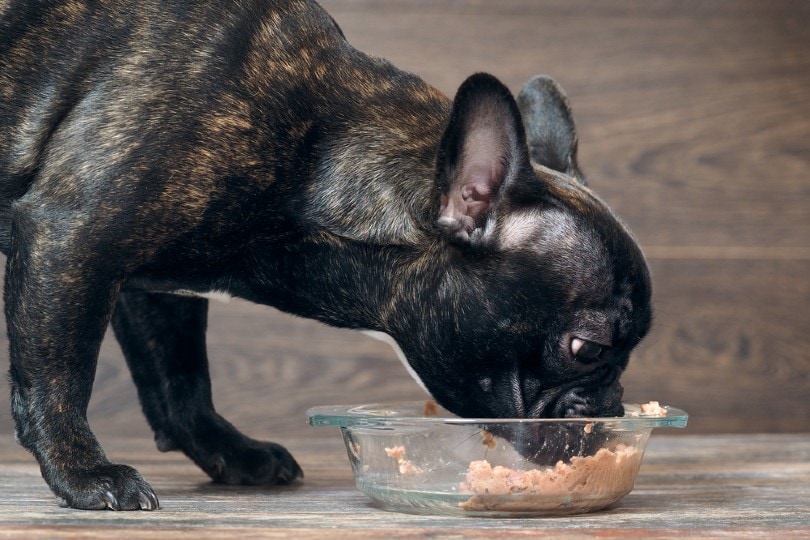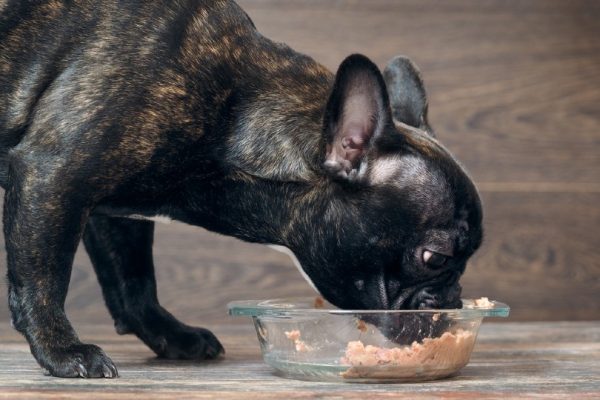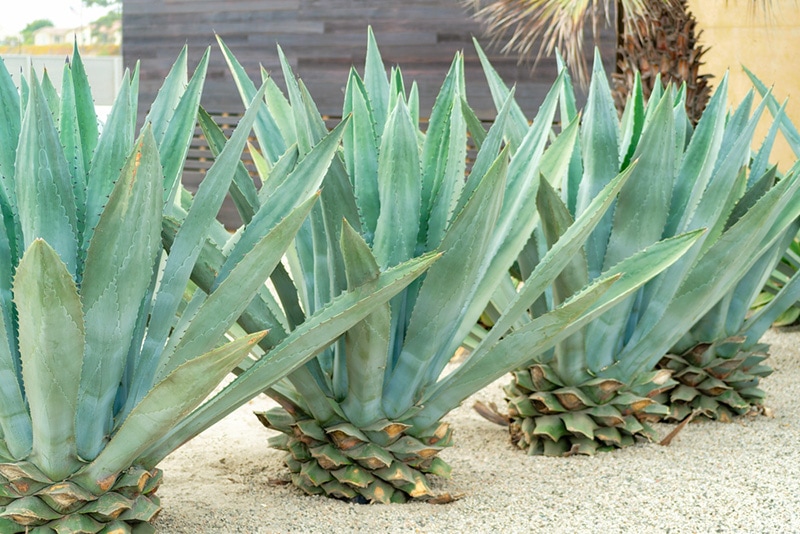Click to Skip Ahead
We all want to ensure that we are feeding our dogs a well-balanced diet that meets all their nutritional needs. Not only are there an overwhelming number of choices for dog food brands and food varieties, but there is a lot of confusion on what exactly is good and what is bad in terms of dog food.
So, when it comes to wet food, you can most definitely feed your dog wet food alone, if that’s what you and they prefer. The wet pet food market is growing and is expected to continue that growth as more and more owners educate themselves on all things dog food. We’ll take an in-depth look into this below to help you decide if feeding only wet food is suitable for you and your pup.
How Does Wet Food Stand Up to Dry Food?
Wet or canned dog food does not differ in terms of nutritional value or digestibility when compared to dry kibble. Wet foods are formulated to meet a dog’s dietary needs; you just must ensure you are feeding the correct amount of food based on your dog’s age, size, and activity level. This information will be located on the food’s label, just as it is with dry food varieties.
There are plenty of wet food options on the market, with brands falling under Mars Petcare as the leader in sales for the industry. As with dry food, it’s important to choose high-quality wet food. Make sure to read the label, check the list of ingredients, and see if the food has been created to meet the AAFCO guidelines for pet nutrition.
 Benefits of Wet Food
Benefits of Wet Food
There are quite a few reasons why wet food is beneficial as a food choice for dogs. Whether you choose to feed exclusively wet food or use it as a topper, here are the benefits of opting for wet food:
Palatability
There’s no way around it, wet dog food is much more appetizing to dogs than dry food is. Canned wet foods come complete with enticing aromas that can convince even the pickiest of eaters to enjoy a hearty meal. Wet food also comes in a variety of different textures, such as pate, solid, cuts, cubes, and shreds, giving some versatility so that you can find the perfect texture for your pup.

It’s Easier to Chew
While there are some downsides to wet food being so easy to chew, it can also be very beneficial, especially for senior dogs and those that suffer from dental issues or deformities. So, in addition to being aromatic and tasty, it’s very soft and easy for any dog to consume.
Higher Water Content
Wet dog food is much higher in moisture than dry kibble, typically running between 75 and 80 percent moisture. The high-water content helps your dog stay well-hydrated. Dehydration puts serious stress on the kidney, which can lead to some serious health problems over time. The moisture also helps keep the stomach full and discourages overeating.
Fewer Carbohydrates
Wet food contains more meat and fewer carbohydrates than dry dog food. This means there is a higher fat and protein content, and their overall carbohydrate intake will be much less with canned food varieties. Diets high in carbohydrates can lead to obesity, which can cause a slew of other serious health concerns. Overall, wet food can prevent weight gain and even help with weight loss goals for those that need to shed a few pounds.
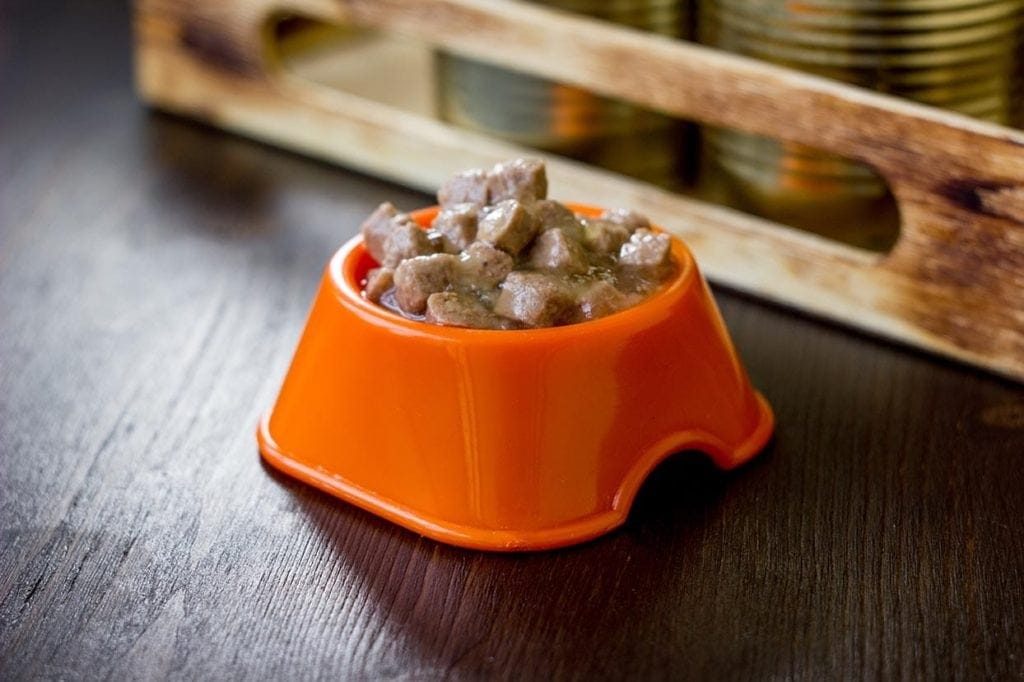
Long Shelf Life
Most wet foods will have a shelf life that ranges from 2 to 5 years unopened. Opened cans of dog food generally last anywhere from 5 to 7 days in the refrigerator once opened.
The Downside of Wet Food
There’s no way around it. Let’s talk about some of the downsides to wet food:
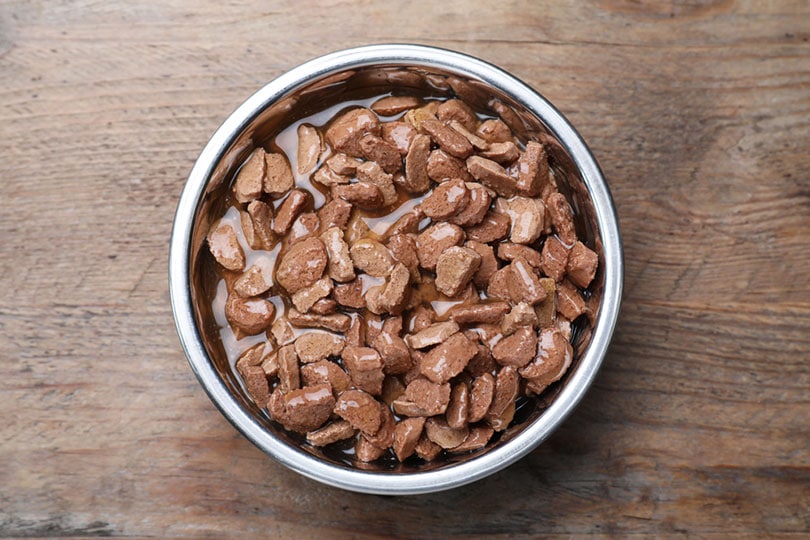
More Expensive
One of the main reasons dog owners opt to steer clear of feeding wet food exclusively is due to the expense. With wet food, you need to buy much more than you would with dry kibble choices. For owners of large dogs, the expense of a wet food-only diet will be quite expensive to keep up with the amount larger dogs need to get their fill.
Less Convenient
Feeding wet food can get quite messy and be a bit more time-consuming than scooping out and measuring kibble. It’s a good idea to opt for a food mat under the dog bowl to prevent extra mess and lessen your clean-up. The smell that entices your dog so much may not be too appealing to you, either.
Spoils Quickly If Left Out
When you feed kibble, you can simply leave it out for your dog to graze or put away what wasn’t eaten. You can’t do the same with wet food varieties. Wet food will spoil within 2 to 4 hours if left out in the bowl. The good news is that if you get it into the refrigerator in time, it can last up to a week. Be sure to check the specific can label for more accurate information on shelf life.
Creates More Trash
There’s no doubt that when compared to dog food, canned food will create much more trash than your bag of kibble. Exclusive wet food feeders will go through cans like crazy. Thankfully, these cans are typically recyclable but it’s easy to get overwhelmed with the number of cans you’ll be separating for trash day. It’s an idea to rinse out the cans when you’ve used it all, as the food stuck to the lining of the can will still hold that aroma and may encourage your dog to go diving face-first into the trash to get some more.

Risk of Tartar Buildup
We discussed in the last section how wet food is beneficial for being easy to chew, but the downside to that is that it can eventually lead to tartar buildup. Dry dog food will make dogs chew harder and the texture of the kibble can help prevent excess tartar buildup and stave off dental issues.
Higher Fat Content
Of course, the fewer carbohydrates are a great benefit to wet food, but the higher fat content may not be suitable for all dogs. Dogs that have sensitivity to high-fat food or are predisposed to pancreatitis may not fare well on a wet food-only diet. This is something to discuss directly with your veterinarian since they are familiar with your dog’s overall health condition.
 Using Wet Food as a Topper
Using Wet Food as a Topper
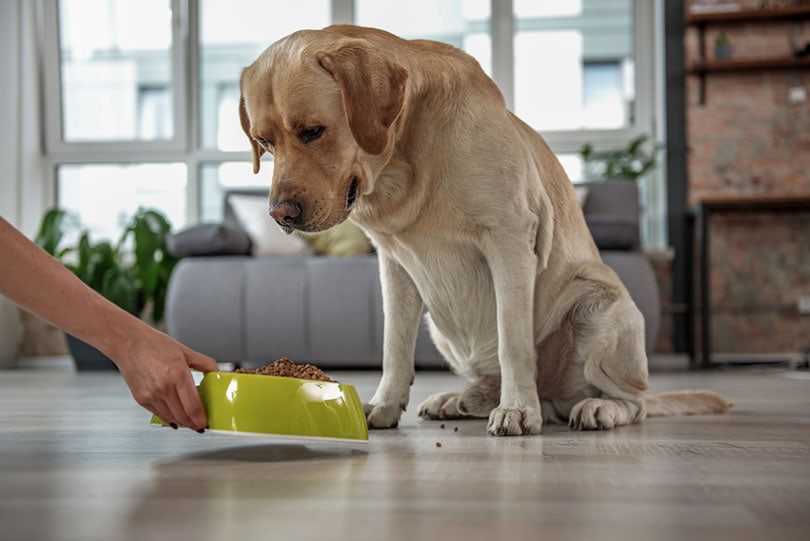
As you can see, wet food has its good points and bad points. This leads many owners to choose to use wet food as a topper to dry kibble to reap the benefits but not have to foot the expense and other inconveniences of feeding a full wet food diet.
You can either add the wet food right into the dry food and mix it in thoroughly, or you can choose to place it on top. For picky eaters, it’s recommended to mix it all in or you may have a dog that is just eating the wet right off the top and leaving the rest.
Adding the wet food into the mix not only makes the meal more aromatic and appetizing but also adds some beneficial moisture. There are packets of toppers available, but you can easily use your typical can of food and use a lid for storage in the refrigerator.
Conclusion
You can most certainly choose to feed your dog a wet food-only diet if you ensure you are feeding high-quality wet food in the correct quantity. Because wet food-only diets can get quite expensive, especially for larger dogs and multiple-dog households, a lot of owners choose to use wet food as a topper to mix in with dry food. This allows your dog to obtain the benefits of both food types and is more budget-friendly and convenient for you overall.
See also:
Featured Image Credit: Irina Kozorog, Shutterstock

